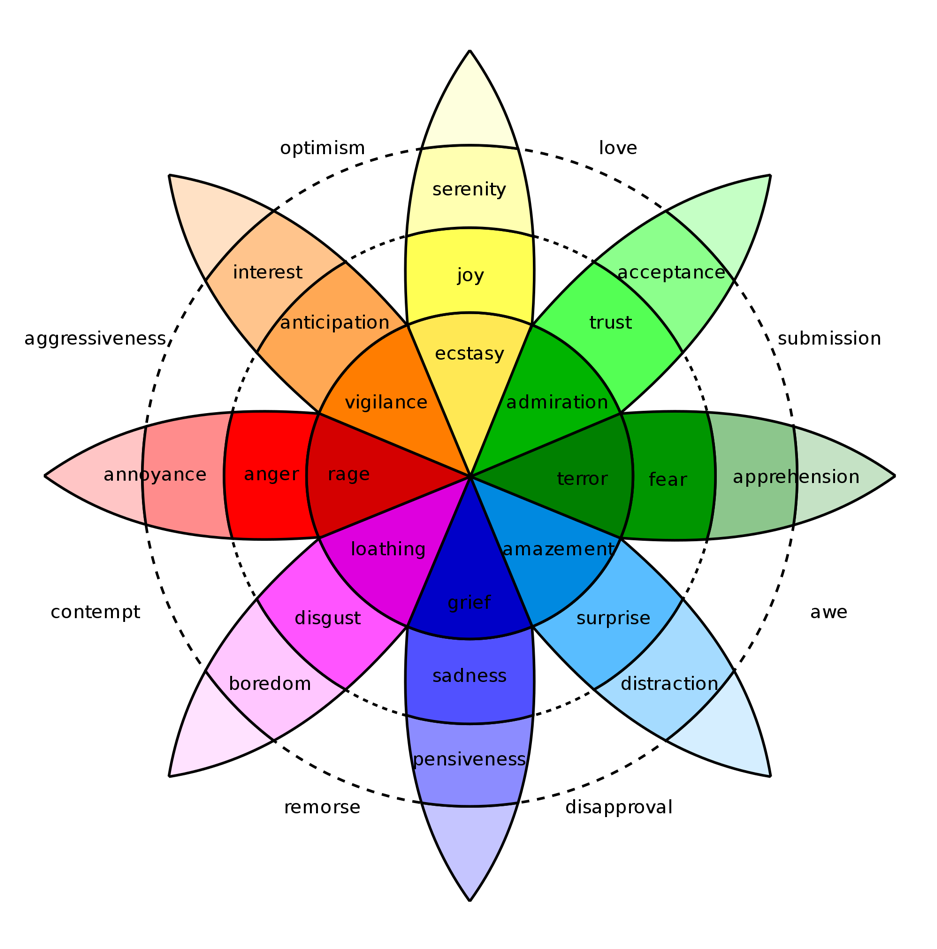In this section, we will define emotions and explain the difference between two different types of emotions: primary and secondary.
9.1.1: Definition of Emotions and Types
Emotions are physiological, behavioral, and/or communicative reactions to stimuli that are cognitively processed and experienced as emotional (Planlap, Fitness, & Fehr, 2006). Emotions are often internally experienced through physiological changes such as increased heart rate, a tense stomach, or a cold chill. These physiological reactions may not be noticeable by others and are therefore intrapersonal unless we exhibit some change in behavior that clues others into our internal state or we verbally or nonverbally communicate our internal state. Sometimes our behavior is voluntary—we ignore someone, which may indicate we are angry with them—or involuntary—we fidget or avoid eye contact while talking because we are nervous.
When we communicate our emotions, we call attention to ourselves and provide information to others that may inform how they should react. For example, when someone we care about displays behaviors associated with sadness, we are likely to know that we need to provide support (Planlap, Fitness, & Fehr, 2006). We learn, through socialization, how to read and display emotions, although some people are undoubtedly better at reading emotions than others. However, as with most aspects of communication, we can all learn to become more competent with increased knowledge and by learning the difference between our primary and secondary emotions.

- Primary Emotions:
Primary emotions are innate emotions that are experienced for short periods of time and appear rapidly, usually as a reaction to an outside stimulus, and are experienced similarly across cultures. The primary emotions are anger, fear, sadness, disgust, surprise, anticipation, trust, and joy.
- Secondary Emotions:
Secondary emotions are not as innate as primary emotions, and they do not have a corresponding facial expression that makes them universally recognizable. Secondary emotions are processed by a different part of the brain that requires higher order thinking; therefore, they are not reflexive automatic. Secondary emotions are love, guilt, shame, embarrassment, pride, envy, and jealousy (Evans, 2001). These emotions develop over time, take longer to fade away, and are interpersonal because they are most often experienced in relation to real or imagined others. You can be fearful of the dark but feel guilty about an unkind comment made to your mother or embarrassed at the thought of doing poorly on a presentation in front of an audience.
Since these emotions require more processing, they are more easily influenced by thoughts and can be managed, which means we can become more competent communicators by becoming more aware of how we experience and express secondary emotions. Although there is more cultural variation in the meaning and expression of secondary emotions, they are still universal in that they are experienced by all cultures. It’s hard to imagine what our lives would be like without emotions, and in fact many scientists believe we wouldn’t be here without them.